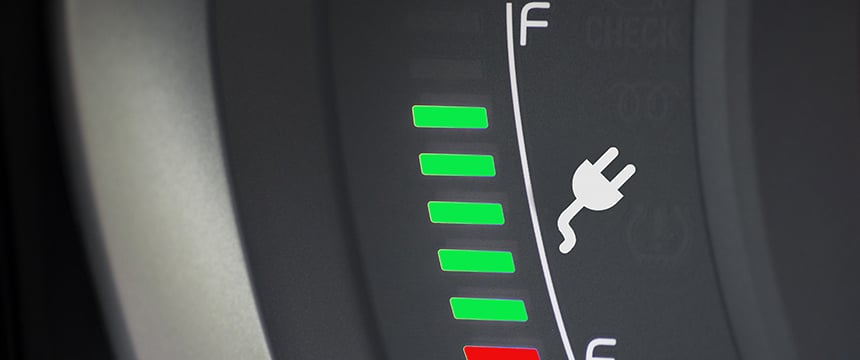Electrified Industrial Policy: IRS Proposed Regulations on Section 30D EV Tax Credits & EV Manufacturing Grants

The Inflation Reduction Act of 2022 (the “IRA”) and the Infrastructure Investment and Jobs Act of 2021 (the “IIJA”) set in motion an ongoing series of changes that are aimed at transforming, among other things, the automotive sector in the United States. As Foley has highlighted over the last couple years,1 the federal government has been making regular updates to rules and guidance aimed at molding the automotive transportation system into an electrified system. Two recent developments provide a glimpse into how the federal government is attempting to balance knock-on effects from the IIJA’s and IRA’s preferences for domestic production and manufacturing.
The EV Tax Credit Proposed Rules
On March 31, 2023, the IRS released new proposed regulations (the “Proposed Rules”) related to the Plug-In Electric Drive Vehicle Credit (the “EV Tax Credit”) under Section 30D of the Internal Revenue Code (the “Code”), as it was amended under the IRA. The Proposed Rules provide additional guidelines and requirements relating to the purchase of qualifying new clean vehicles and the critical mineral and battery component requirements for new electric vehicles and new qualified fuel cell vehicles. The IRS closed the window for comments on the Proposed Rules on June 16, 2023. Critics of the Proposed Rules noted that they were either too restrictive or not restrictive enough with respect to pushing domestic manufacturing
As amended by the IRA, to qualify for the EV Tax Credit, a “new clean vehicle” must be manufactured by a “qualified manufacturer” and meet certain requirements (as previously discussed by Foley here) in order to be eligible. Certain additional requirements also apply to the purchaser of a new clean vehicle in order to qualify for the EV Tax Credit. The IRA also disqualifies certain vehicles from the EV Tax Credit if the battery of the vehicle contains critical minerals or battery components from a foreign entity of concern. If eligible, the maximum possible credit per vehicle available is $7,500, of which half relates to the vehicle meeting certain requirements relating to critical minerals (the “Critical Minerals Requirement”) and the other half relates to the vehicle meeting certain requirements related to battery components (the “Battery Components Requirement”).
Critical Minerals Requirement
New Section 30D(e)(1)(A) provides that the Critical Minerals Requirement for a battery is met if the percentage of the value of the applicable critical minerals contained in such battery that were (i) extracted or processed in the United States, or in any country with which the United States has a free trade agreement in effect, or (ii) recycled in North America, is equal to or greater than the applicable percentage set forth in the chart below, as certified by the qualified manufacturer of the vehicle:
| Date Vehicle is Placed in Service | Applicable Percentage |
| After April 17, 2023 and before January 1, 2024 |
40% |
| During calendar year 2024 |
50% |
| During calendar year 2025 |
60% |
| During calendar year 2026 |
70% |
| After December 31, 2026 |
80% |
The Proposed Rules provide a three-step process for determining the percentage of the value of the applicable critical minerals that contribute toward meeting the Critical Minerals Requirement.
- Procurement Chains: The first step is to determine the procurement chain for each applicable critical mineral. A “procurement chain” is the common sequence of extraction, processing, or recycling activities that occur in a common set of locations, concluding in the production of constituent materials. It is possible for there to be multiple procurement chains for the same critical mineral based on different sources and locations.
- Qualifying Critical Minerals within each Procurement Chain: Second, each procurement chain is evaluated to determine whether the critical minerals from the chain have been (1) extracted or processed in the United States, or in any country with which the United States has a free trade agreement in effect, or (2) recycled in North America. “North America” means the territory of the United States, Canada and Mexico. This step determines the “qualifying critical minerals”.
- Calculate Qualifying Critical Mineral Content: Thirdly, the value of the “qualifying critical mineral content” in a battery needs to be calculated. Qualifying critical mineral content is to be defined as “the percentage of the value of the applicable critical minerals contained in the battery” that “were extracted or processed in the United States, or in any country with which the United States has a free trade agreement in effect, or were recycled in North America”. The calculation is made based on the percentage that results from dividing the total value of qualifying critical minerals by the total value of critical minerals.
Battery Components Requirement
New Section 30D(e)(2)(A) provides that the Battery Components Requirement for a battery from which the electric motor of a vehicle draws electricity is met if the percentage of the value components contained in such battery that were manufactured or assembled in North America is equal to or greater than the applicable percentage set forth in the chart below, as certified by the qualified manufacturer of the vehicle:
| Date Vehicle is Placed in Service | Applicable Percentage |
| After April 17, 2023 and before January 1, 2024 |
50% |
| During calendar year 2024 or 2025 |
60% |
| During calendar year 2026 |
70% |
| During calendar year 2027 |
80% |
| During calendar year 2028 |
90% |
| After December 31, 2028 |
100% |
The Proposed Rules provide a four-step process for determining the percentage of the value of the applicable battery components that contribute toward meeting the Battery Components Requirement.
- Components Manufactured or Assembled in North America: The manufacturers will need to determine whether each battery component in a battery was manufactured or assembled in North America. The Proposed Rule lays out treatment for “battery”, “battery cell” and “battery component” separately. Further “manufacturing” is defined as using industrial and chemical steps beginning with constituent materials and other components that do not contain constituent materials to create a new battery, where “assembly” is defined as the process for combining battery components into battery cells and battery modules.
- Incremental Value of Each Battery Component: Each battery component then needs to be assigned an “incremental value” and then divided into categories as to whether or not they were manufactured or assembled in North America.
- Sum of Total Incremental Value of Battery Components: The total incremental value of battery components should then be calculated for the applicable battery.
- Calculate the Qualifying Battery Component Content: Finally, the manufacturer needs to calculate the “qualifying battery component content” by finding percentage of the value of battery components contained in a battery that were manufactured or assembled in North America, determined by dividing the total incremental value of North American Battery components (determined in step 2 above) by the total incremental value of battery components (determined in step 3).
In applying these criteria to existing EV offerings, the effect does seem to be a winnowing of eligible EVs as evidenced by the U.S. Department of Energy’s listing of eligible vehicles, available here.
EV Manufacturing Grants
Perhaps relatedly, the administration is also hoping to enhance the American manufacturing capacity for EVs, including its component parts. On June 28, 2023, the Office of Manufacturing and Energy Supply Chains (“MESC”) within the U.S. Department of Energy issued a Notice of Intent to Issue a Funding Opportunity Announcement relating to Domestic Manufacturing Conversion Grants. As another outgrowth of the IRA, MESC is looking to encourage domestic manufacturing capacity through $2 billion in grants, specifically deployed through grants and loan guarantees to clean vehicle manufacturers and suppliers, including component manufacturers. The opportunity will prioritize refurbishment and retooling of existing manufacturing facilities that have either ceased operation recently, or will cease operation in the near future. Funding opportunities may range from $25 million to $500 million, with MESC anticipating to make approximately 9-15 awards. Cost sharing by applicants is expected to be at least 50%. Applicants will also be judged on their Community Benefits Plan in addition to the technical merits of an application.
The notice of intent does not constitute a Funding Opportunity Announcement, and to the extent this opportunity is formalized, MESC will issue such a FOA. Nonetheless, this notice highlights yet another prong of the federal government’s overall push to transition the automotive transportation economy from internal combustion engines to electrified vehicles, with an emphasis on retooling the American economy to be a manufacturing hub for these vehicles. Funding opportunities like the one forecast in this notice of intent will hopefully enable even more EVs to be eligible for the EV Tax Credit.
Foley is continuing to monitor developments in the EV ecosystem and is available to help clients put these developments into practice for their businesses.
1 See our prior articles on EV infrastructure and EV developments from the federal government including: https://www.foley.com/en/insights/publications/2022/01/as-ev-adoption-rises-infrastructure-inflection, https://www.foley.com/en/insights/publications/2022/02/us-dot-releases-nevi-formula-program-guidance,
https://www.foley.com/en/insights/publications/2022/05/doe-announces-3-billion-funding-supply-chain, https://www.foley.com/en/insights/publications/2022/06/us-dept-of-transportation-proposed-ev-charging, https://www.foley.com/en/insights/publications/2022/08/ev-charging-station-tax-credits-are-back, https://www.foley.com/en/insights/publications/2023/03/new-rules-ev-tax-credit-inflation-reduction-act, and https://www.foley.com/en/insights/publications/2023/04/us-dot-finalizes-ev-charging-infrastructure-rules.

